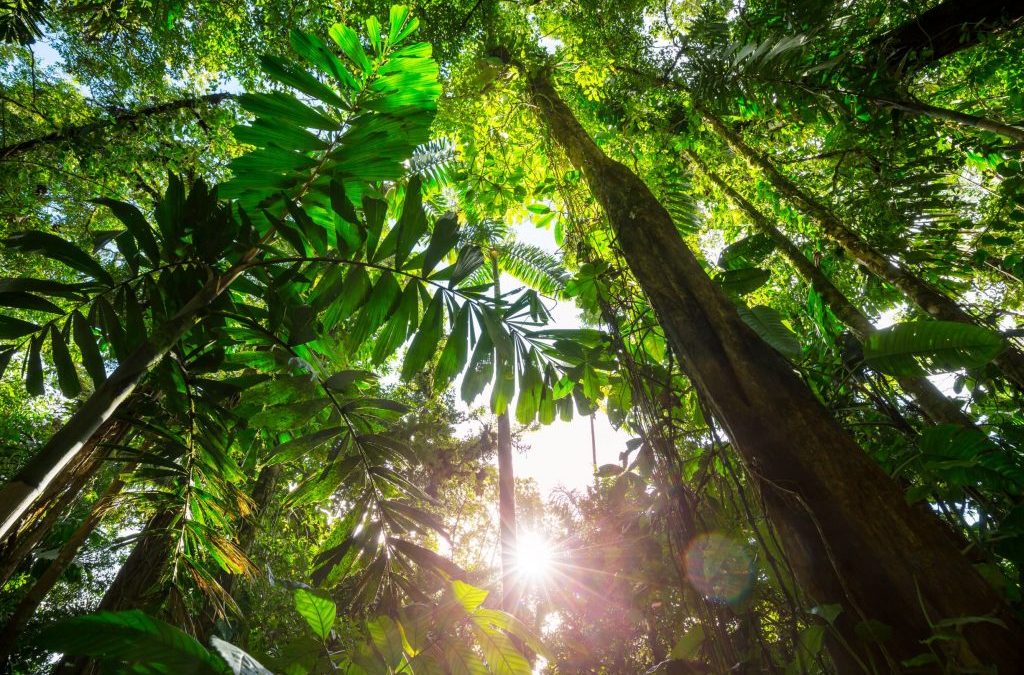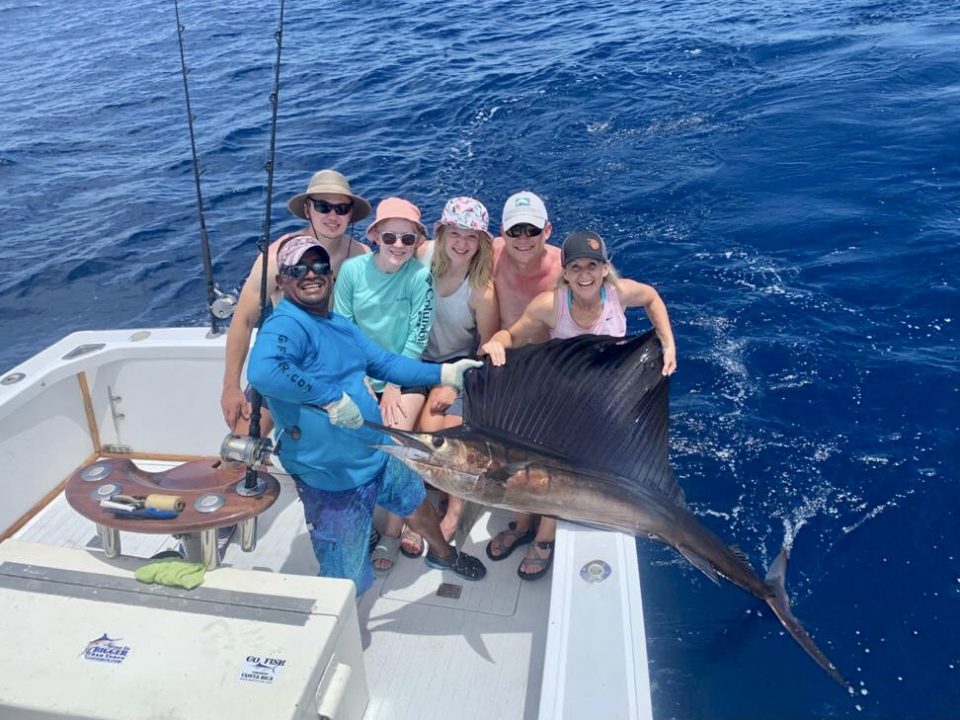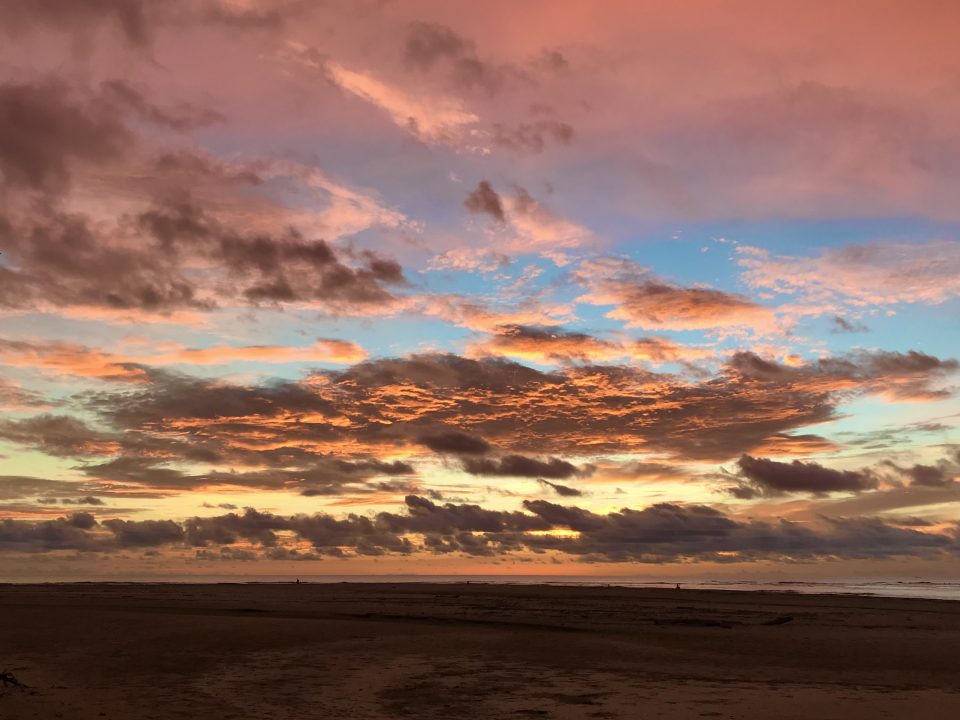Discover the Variety and Abundance of Costa Rica’s Microclimates
People often wonder what to expect when they come to Costa Rica, particularly about the weather.
Will it be hot all the time? Will it be raining every day? Do I need a jacket and pants or will I live in flip flops? Well, the answer varies on what part of Costa Rica you will be visiting.
There are 12 climatic zones in Costa Rica, ranging from hot and humid to cool and dry. The temperature is determined mostly by elevation and season. Costa Rica has two seasons throughout the year. There’s the dry season from December to April and the rainy season from May to November.
Costa Rica’s microclimates range from the steamy volcanoes to the cool cloud forests, and from the dense jungle to the tropical dry forests and hot beaches. Go Fish Costa Rica offers trips that give visitors several microclimate options, most within a two-hour drive from Tamarindo.
Tamarindo Beach
Guanacaste, along the Pacific north coast, is the home of the tropical dry forest. Within this province alone there are several microclimates depending on where you are. The lowlands along the coast, in towns like Tamarindo, tend to be hot year round (daytime high: 30 degrees Celsius, 86 degrees Fahrenheit) and often have a longer dry season than the rest of the country. If you want to encounter the best sport fishing, sunset cruises, warm-water surfing, infamous scuba diving, and rip-roaring ATV tours, this is the place to try them all.
Tamarindo Estuary
Nearby, visitors to Tamarindo can experience a very different environment called a mangrove. The 1,500-acre Tamarindo Estuary, part of the Tamarindo National Wildlife Refuge and Las Baulas National Park, provides a unique experience for visitors to the area. While it’s only minutes from Tamarindo beach, the estuary hosts a vastly different habitat, with sightings of the great heron, egrets, kingfisher, osprey iguanas, crocodiles, howler monkeys and more.
Riverboats and Birdwatching in Palo Verde
If you’re looking for lusher tropical jungles for birdwatching and other wildlife majesty, you can travel to the southeast part of Guanacaste, to Palo Verde National Park. Here you can experience a river tour down Rio Tempisque where you will see capuchin monkeys, crocodiles, and maybe even a pair of scarlet macaws. In fact, you’re sure to see your fair share of birds along the river, where 3,000 aquatic birds nest, including white ibis, roseate spoonbills, wood storks, and the nation’s largest colony of black- crowned night herons. Palo Verde is both a wetland (in the rainy season) and one of the best examples of an untouched tropical dry forest in the world.
Cloud Forest of Monteverde
There is no better place to observe the abundant nature of Costa Rica than Monteverde. The misty Cloud Forest in Costa Rica holds 2.5 percent of the world’s biodiversity. It’s home to 100 species of mammals, 400 birds, 120 reptile and amphibian, over 2,500 plant species and thousands of types of insects. The climate of the Monteverde Cloud Forest is fairly consistent temperature-wise. The warmest month is April with a temperature of 23 degrees Celsius (74° F), while the coldest month is February with a temperature of 14 degrees Celsius (57° F). The Cloud Forest receives a large amount of rainfall, with a yearly average of 260 centimetres (102 inches). Northeasterly winds off the Atlantic Ocean bring moist air to the Cloud Forest, where it ascends the east side of the mountains, creating clouds and
producing precipitation. Only a three hour drive from Tamarindo, a trip to Monteverde should definitely be on your trip itinerary.
Volcanic Hot Springs and Mud Baths
Rincon de la Vieja is the largest and most active volcano in the province of Guanacaste. Standing at 1,916 meters (6,286 feet) high and 15 kilometres (9 miles) wide, the 600,000-year-old geological wonder has at least nine volcanic craters and 32 rivers flowing down its sides. Steaming fumaroles, bubbling volcanic mud pits, and natural hot springs give visitors a chance to experience a habitat like no other in the region. Here, visitors enjoy diving right into this diverse environment, taking in all the natural abundance with healthy, mineral-rich hot spring soaks and mud baths. Visitors to the volcano needn’t worry, though, its last big eruption was in 1998.
When you visit Tamarindo Costa Rica, you will have a chance to acquaint yourself with several types of natural habitats, all within relatively close reach. After all, Costa Rica may be a small country but it holds over 5 percent of the entire world’s biodiversity. Discover more of world and make the most of your visit with Go Fish Costa Rica Adventure Tours!
Blog by: Jennifer LaCharite – Costa Consultants, International




